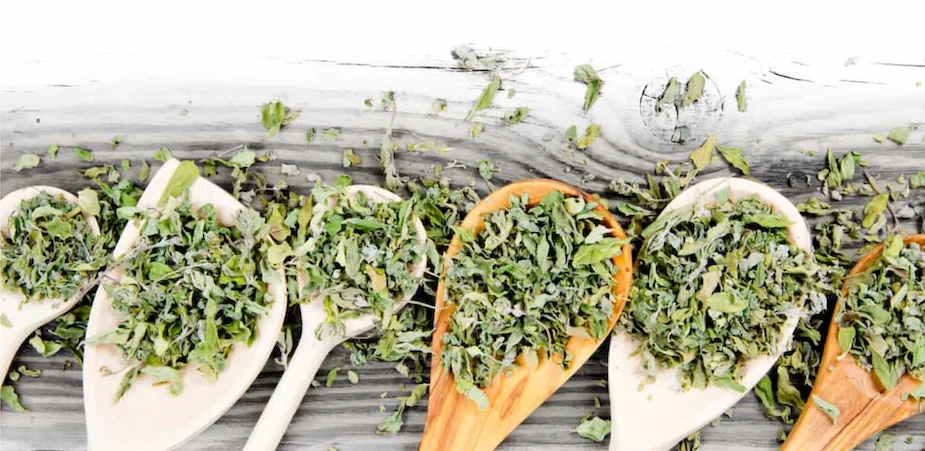- Home
- Easy Food Dehydrating Podcast - Hub Page
- Podcast Episode 4: Dehydrating Fruit, Vegetables, and Meat
Podcast Episode 4:
Dehydrating Fruit, Vegetables, and Meat

by: Susan Gast | Author, Blogger at Easy Food Dehydrating, Beesville Books, and SupaBees music!

Thanks for checking out this Podcast Dehydrating Fresh Fruit, Vegetables, and Cooked Meats
Listen:
Head on over to our Podcast Host to see a list of all our Easy Food Dehydrating episodes... or go to our hub page on this site. Please note that for your convenience, the episodes on our site contain the Podcast transcripts, too!
Read the Full Transcript, Below:
00:07
Hello and welcome to Easy Food Dehydrating, the show that teaches you how to safely dehydrate and store fresh (or frozen) fruits and vegetables, along with cooked meats. I’m your host, Susan Gast.
00:23
In today’s episode, I’ll discuss dehydrating fruit and veggies, and when to use lemon juice to deter oxidation. I’ll provide you with 7 tips on both fruit and veggies to ensure your success!
00:40
Hi there. Welcome to this podcast, #4: All about dehydrating fresh fruit, vegetables and cooked meats. To ensure that your fruits are properly dehydrated, it is important to slice them thinly and evenly. You can use a sharp knife, or a mandoline, for this. If you have thicker slices, they will take longer to dehydrate, and may not come out as crisp.
01:06
When dehydrating fresh fruits, it is also important to make sure that they are dry before storing them. If there is any moisture remaining, the fruits will spoil more quickly. To help remove any excess moisture, you can place the sliced fruits on a paper towel or kitchen towel and pat them dry. Once your fruits are sliced and dried, you can place them on the dehydrator trays.
01:34
A Passion for Pineapple? One of the easiest fruits to dehydrate is definitely pineapple. It has a relatively low water content and a sweet and tangy flavor that really shines when it's dried out. Try cutting the fruit into small pieces and dehydrating it at around 135 degrees Fahrenheit for about 6 hours.
01:56
The easiest fruit to dehydrate is… drumroll… a banana. Bananas are the easiest fruit to dehydrate because they are naturally sweet and have a firm texture.
02:08
The best fruit to dehydrate is …[drumroll]… apple. Apple is the best fruit to dehydrate because it has a low water content and a high sugar content. This makes it perfect for dehydration as it will retain its flavor and sweetness while being stored in dehydrated form.
02:29
Here are seven tips for successfully dehydrating fruit.
Number one: choose the right fruit. Not all fruit is suitable for dehydration. Soft, watery fruits such as pineapple and melon and strawberries will not dehydrate as well and will turn into a mushy mess. But instead choose firmer fruits such as apples, pears and apricots. I know it sounded a bit of a contradiction when I mentioned “passion for pineapple” before, but it is an easy fruit, but it can get a bit mushy-messy.
03:02
Number two: peel and slice the fruit. If you are not using an apple peeler, then use a sharp knife to peel the fruit before slicing it into thin pieces.
03:13
Number three: soak in lemon juice or pineapple juice. This will help prevent the fruit from browning during the dehydration process.
03:23
Number four: arrange on your dehydrator trays. Make sure the slices are not too close together or they will not dry evenly.
03:32
Number five: dehydrate at the correct temperature and time. Now then, the correct temperature and time will depend on the type of dehydrator that you are using. Follow the manufacturer's instructions for best results.
03:46
Number six: check for ‘doneness’ periodically. Some pieces of fruit may be dry while others still have a little moisture left in them. Remove them from the dehydrator when they are all uniformly dry.
04:00
Number seven: store in an airtight container. Dehydrated fruit can be stored in an airtight container for up to six months!
04:10
So - not to leave the vegetables out… here's the seven tips for successfully dehydrating fresh vegetables.
04:17
Number one: start with fresh produce that is ripe but not overripe. Overripe produce will be mushy and won't dehydrate well.
04:27
Number two: wash your produce thoroughly to remove any dirt or bacteria.
04:32
Number three: cut your produce into small, uniform pieces. This will help them dehydrate evenly.
04:40
Number four: spread the pieces out on your dehydrator trays, making sure they aren't touching each other.
04:47
Number five: set your dehydrator to the appropriate temperature for the type of produce you're drying.
04:53
Number six: let the dehydrator run until the produce is completely dry. This could take several hours, depending on the type and thickness of the pieces.
05:05
Number seven: store the dried produce in an airtight container in a cool, dark place. Dried fruits and vegetables will last for several months when stored properly.
05:16
Let's move on to dehydrating cooked meat now. Dehydrating cooked meat is a great way to preserve it for later use. Cooked meat can be dehydrated in a dehydrator or in an oven set on the lowest setting possible. First, cook the meat until it's fully cooked through. Then slice the meat into thin strips and lay them on a wire rack over a baking sheet. Place the baking sheet in the dehydrator or the oven and set the temperature to the lowest setting possible. Dehydrate the meat for eight to 12 hours, or until it is dry and leathery. Once dehydrated, the meat can be stored in an airtight container in a cool, dry place for up to six months. Here's some safety precautions when dehydrating meat!
06:03
Sponsor Message
You're going to love this. Getting Susan's book, Easy Food Dehydrating is one of the smartest things you can do for your health and your budget. Not only will you save money, but you'll know exactly what goes into your recipes. Susan's book takes you from start to finish with all the recipes on her site, including her best selling “Make Your Own Dog Food” recipes for Chicken Chow and Bow Wow Beefy Chow. Learn how to dehydrate the top 14 fruits and the top 16 vegetables, along with cooked meats such as chicken, beef, and turkey. Visit Easy Food Dehydrating and get started today.
06:49
When dehydrating meat, it is important to take safety precautions to prevent food poisoning. Make sure that the meat is at room temperature before dehydrating it and do not dehydrate any meat that has been previously frozen.
07:04
Also, be sure to wash your hands thoroughly after handling raw meat. If you are dehydrating ground meat, cook it thoroughly first before dehydrating to ensure that it is safe to eat.
07:18
When dehydrating fruits and vegetables, there is no need to take any special safety precautions. Just be sure to wash the produce thoroughly before dehydrating.
07:28
Dehydrated foods can be stored in an airtight container in a cool, dark place for up to six months, as mentioned earlier. For longer storage, dehydrated foods can be stored in the freezer. But again, I don't like that because you risk getting the moisture into your vacuum sealed packages when you store it in a wet, if you will, environment of a freezer.
07:51
Now, how to dehydrate food for long term storage - well one way to dehydrate food for long-term storage - is to use an oven, as we've mentioned. Put it on the lowest setting and place the food on the middle rack. You can leave the door slightly ajar to allow moisture to escape.
08:07
Check on the food every hour or so and turn it over if necessary. The food is done when it's brittle and breaks into small pieces. But another - and the best way to dehydrate food - is to use a dehydrator. My favorites are Nesco and Excalibur brands.
08:26
Dehydrators are specially designed for dehydration and come with racks that the food can be placed on. The food is then exposed to low levels of heat and circulated air, which removes the moisture.
08:38
Dehydrators typically have timers so that you can set them and forget about them.
08:43
Dehydrated foods can be stored in airtight containers, as mentioned, in a cool, dark place for up to six months. But for longer storage, again, you can put it in the freezer. But, personally, I prefer to vacuum-seal the air out, add your oxygen absorber, put it in Mylar bags and in the bin, and you're good for years, actually.
09:04
As promised: The Best Foods To Dehydrate. Now there are many foods that can be dehydrated. Some of the most popular of fruits, vegetables, and meats are: …[drumroll]… fruits: apples, bananas, oranges, strawberries, and grapes.
09:25
For veggies: carrots, celery, onions, peppers, and tomatoes.
09:32
And meat? Chicken, beef, pork, seafood and turkey. All of those listed above are on my website, Easy Food Dehydrating. So make sure you go check that out.
09:47
Before we go, I'd like to say, “thank you for listening” and if you enjoyed it, please share this with someone else you might think enjoy it too, because you'll see how easy it is to dehydrate food, whatever the reason or season. Right? Okay, thanks again for listening and I'll see you next time.
10:10
Closing:
Thanks for listening to the Easy Food Dehydrating podcast.
Visit Easy-Food-Dehydrating.com for much more information on how to dehydrate food and the best way to safely store it.
Head on over to our Podcast Host to see a list of all our Easy Food Dehydrating episodes... or go to our hub page on this site. Please note that for your convenience, the episodes on our site contain the Podcast transcripts, too!
Thinking of Starting a Podcast?
Thinking of starting your own Podcast? I’m having a total blast… and Buzzsprout is here to help you get started. It’s so easy to launch a professional Podcast, and their support is second-to-none. Over 100,000 people already launched their Podcast with Buzzsprout.
They get your Podcast into every major Podcasting platform: such as Apple Podcasts, Spotify, Google Podcasts and many more. Get a great-looking Podcast website, along with an awesome Podcast player you can drop into other websites, detailed analytics, tools to promote your episodes, and much, much more!
Start today and get a $20 Buzzsprout credit when you upgrade to any plan via the link right HERE - this takes you to Buzzsprout's login-page where you can sign up for a free Buzzsprout account to get you going. This lets Buzzsprout know we sent you to them… and it helps support our show!
Buzzsprout - it's the easiest way to start a Podcast.
Before You Go...
If you like the content, please give me some love by clicking on the 🩷 in the lower right hand corner (on just about all my pages). This signals to me that you find it enjoyable and useful. Thank you so much!











